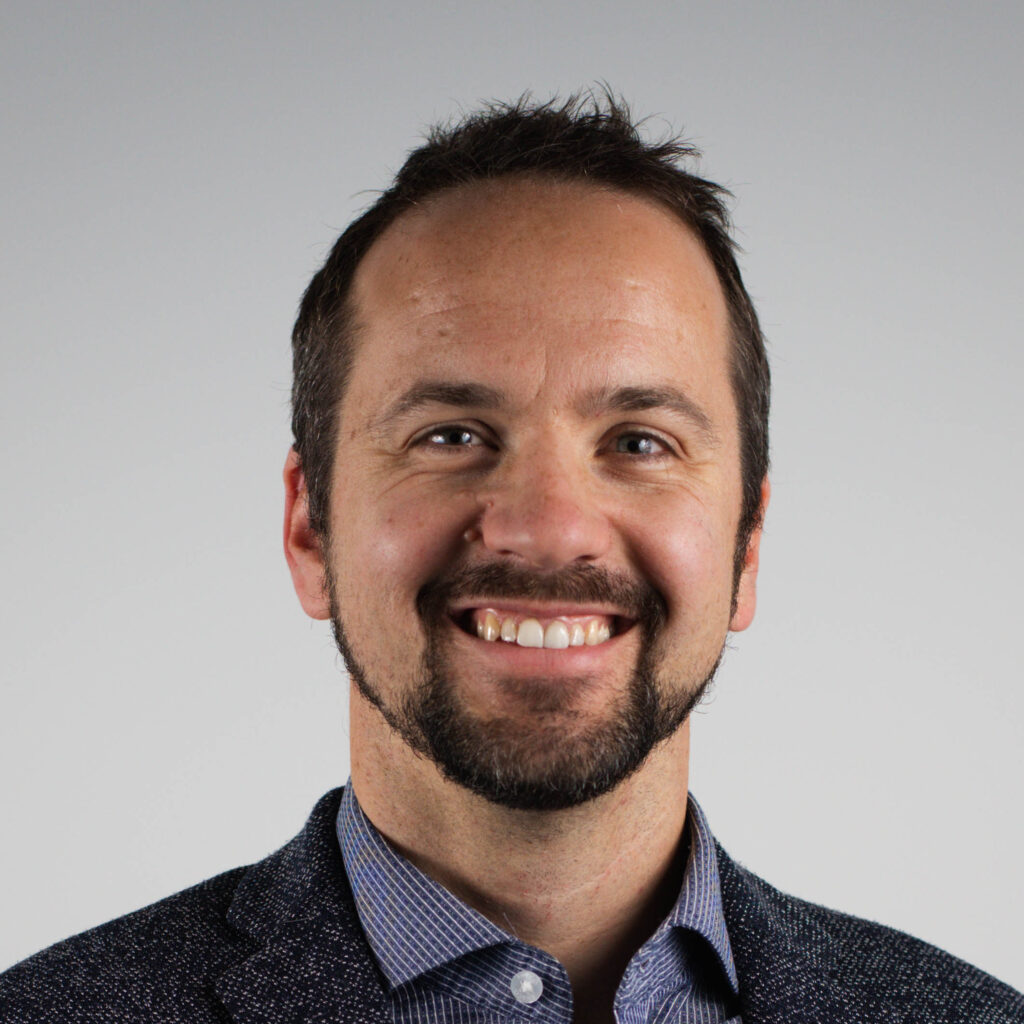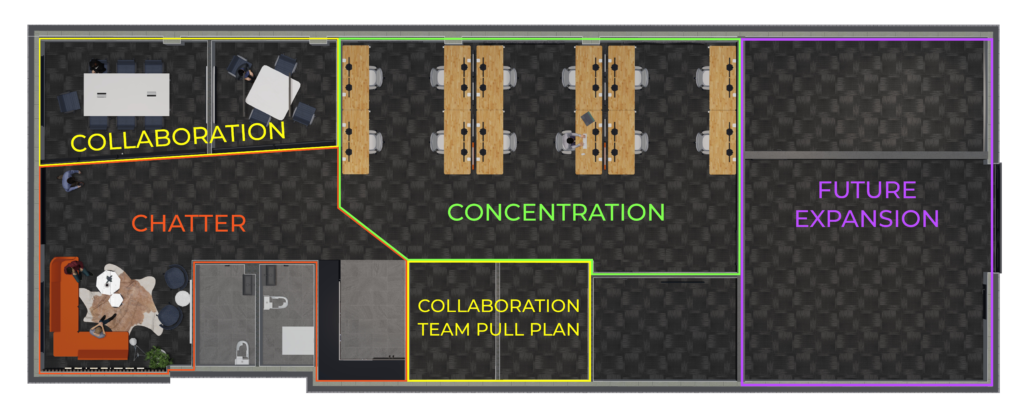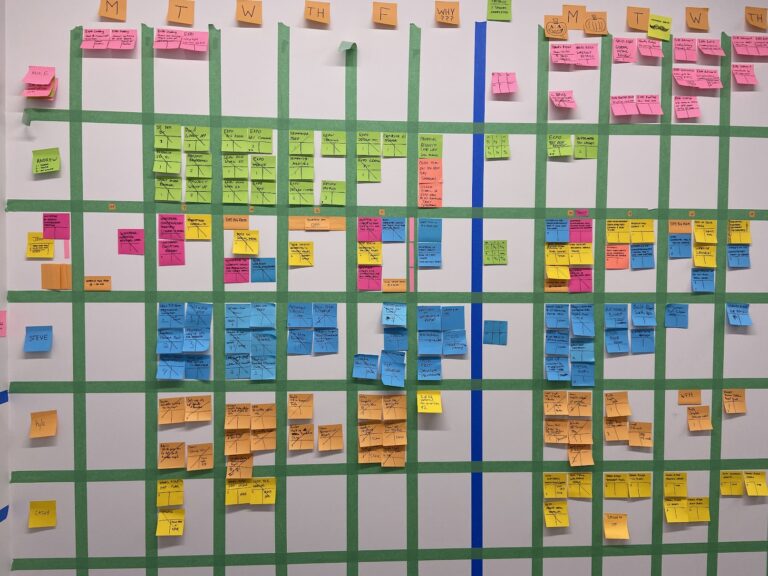Our Next Act: Experimenting with a New Way of Working

Posted by Steve Weinbeer
Categories
November 1, 2022
In a rapidly changing world, organizations must be adaptable to survive. We’ve been transitioning from working remotely into our brand new office space, and we’d like to make the most of our new location. We wanted to experiment with new ways of working in-person to remain agile and responsive to the needs of our team–and our clients!
By sharing our journey with you, we hope that it will spark conversations about different ways of working. Ultimately, we aspire to create a space where we feel completely safe to share ideas, make mistakes, explore, learn collectively, and present the best versions of ourselves. Here are some of the ideas we’ve come up with so far.
Planning an Activity-Based Workplace
What is an Activity-Based Workplace?
An activity-based workplace is a type of office space in which employees have a variety of different places to work, depending on the task they are working on. This can include standing desks, sit-to-stand desks, lounge areas, and private meeting rooms. The goal of an activity-based workplace is to create a more flexible and productive environment.
The traditional office space is designed for a single purpose: sitting at a desk and working on a computer. But this doesn’t work for everyone. Some people need to stand up to stay focused, while others need to move around to stay energized. And some people just prefer to work in different environments throughout the day.
An activity-based workplace can help our team be more productive by giving them the ability to choose the best place to work for each task. Check out more about activity-based workplaces from Wework.
Collaboration, Chatter, and Concentration
The concept of Activity-based working (ABW) has revolutionized the way we see office spaces. We have been inspired to try out this new way of working and have divided up the work we do into three distinct categories: Collaboration, Chatter, and Concentration.
‘Collaboration’ spaces are designed for tasks such as working on projects with team members, brainstorming ideas, and problem-solving. ‘Chatter’ spaces are intended for bringing people together: open, inviting, and social. ‘Concentration’ spaces encourage individual work and deep focus.

Over the next year, we plan to purchase furniture and artistic wayfinding to delineate each space. We hope that ABW will allow us to better utilize our office space and create spaces that encourage our team to work effectively and creatively.
Flexibility with Predictability
Adam Grant, an organizational psychologist with the podcast “Work Life” interviewed Leslie Perlow, a leading expert on work time at Harvard Business School. She thinks flexibility is key, but only with predictability. To help people manage their time, Perlow created a program at Harvard called ROWE (Results Only Work Environment), which allows team members to work from wherever they’re most productive. She found that when people are in charge of their schedules, they work harder and more effectively.
Now that we have a physical space, we will be experimenting with both the “when” and the “where” of work. We want our team to have the flexibility to choose their hours and location–as long as their hours are predictable. By accommodating to each individual’s lifestyle and preferences, our goal is to enable more effective work and ultimately benefit everyday life.
Check out Perlow’s podcast interview and peer-reviewed journal paper on flexibility at work.
In-Spire Corner
We do our best work when we find meaning and fulfillment in our work. Recently, we’ve taken a page out of Google’s playbook with “20% time”, and we’re excited to experiment with giving our team time to pursue their own passions and infuse their work with meaning. We’re going to call it “Eng-Spire time.” We’re confident that this will not only foster a deeper level of engagement within the team, but also spur greater innovation and creativity.
Because we’re constantly learning new things, we’re able to bring fresh ideas to our projects. We’ve even designated an entire board room, our “In-Spire Corner”—a big chunk of our usable space—to dedicate time each week sitting immersed in this environment. There are only a few rules: to share our work with each other once a month, to make it visual, and relate the work to how it improves our everyday work in some way.
At the end of the day, we want our team to show up with the best version of themselves. According to a study done by human motivation psychologists Edward Deci and Richard Ryan, when employees were provided with greater autonomy in their workplace, they experienced “greater basic psychological need satisfaction, were more engaged in their work, evidenced greater well-being, and had higher performance ratings than did employees of managers who were more controlling.” Eng-Spire time is our way of doing just that.
Quick Wins and Losses
Why do start-ups fail? That’s the question Eric Ries set out to answer in his book, The Lean Start-Up. The main message of the book is to experiment, prototype ideas, and fail fast.
Ries argues that the key to a successful start-up is not only to have a great idea, but to execute on that idea quickly and efficiently. He advocates for a “lean” approach to start-ups, which means making small changes and testing them out before making bigger ones. Maximizing the cycles of the build-measure-lean feedback loop gives valuable information about whether to stay on course or pivot.
While we may not be the stereotypical tech-based start-up, the concept of quick wins and losses is a powerful tool that we want to apply to everything we do. Currently, we are experimenting with an analog version of our project planning–yellow stickies, sharpies, and masking tape on a wall. During the time of the pandemic, we were fully digital, but are now deliberately slowing things down to break down our processes to be more intentional and present in our workflow.

Conclusion
There’s no question that the traditional 9-to-5 workday is in need of an overhaul. The way we work has changed drastically in recent years, and yet our models for working haven’t kept pace. It’s time for a new way of working – one that is more flexible, collaborative, and focused on results rather than time spent in the office.
At the heart of all these ideas we have is experimentation. We need to experiment with different ways of working, different tools and technologies, and different organizational structures. Only by trying new things will we be able to find what works best for our businesses and our employees.
Come by our office sometime! We’d love to show you what we’re up to and hear your story as well.
